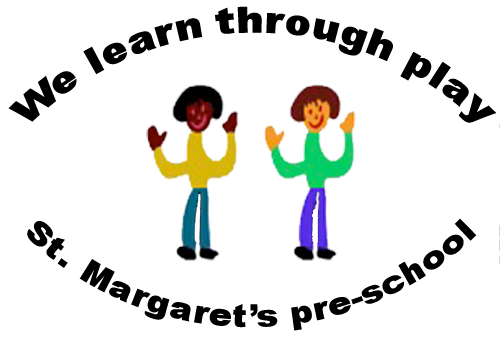Policy statement
We are able to take action to apply first aid treatment in the event of an accident involving a child or adult. At least one adult with a current first aid certificate is on the premises, or on an outing, at any one time. Newly qualified staff who achieved an early year’s qualification at level 2 or 3 on or after 30 June 2016 also have a paediatric first aid certificate in order to be counted in the adult: child ratios. The first aid qualification includes first aid training for infants and young children. We have evidence of due diligence when choosing first aid training and ensure that it is relevant to adults caring for young children
Procedures
The first aid kit
Our first aid kit is accessible at all times and contains the following items:
- Triangular bandages (ideally at least one should be sterile) x 4.
- Sterile dressings:
- Small x 3.
- Medium x 3.
- Large x 3.
- Composite pack containing 20 assorted (individually-wrapped) plasters x 1.
- Sterile eye pads (with bandage or attachment) e.g. No 16 dressing x 2.
- Container of 6 safety pins x 1.
- Guidance card as recommended by HSE x 1.
- Burn Gel.
- 2 pairs of disposable plastic (PVC or vinyl) gloves.
- 1 plastic disposable apron.
- A children’s forehead thermometer.
- A supply of ice is kept in the freezer.
- Information about who has completed first aid training and the location of the first aid box is provided to all our staff and volunteers.
- The first aid box is easily accessible to adults and is kept out of the reach of children.
- There is a named person in the setting who is responsible for checking and replenishing the first aid box contents regularly check and replenish the first aid box contents.
- Medication is only administered in line with our Administering Medicines policy.
- In the case of minor injury or accidents, first aid treatment is given by a qualified first aider.
- In the event of minor injuries or accidents, we normally inform parents when they collect their child, unless the child is unduly upset or we have concerns about the injury. In which case we will contact the child’s parents for clarification of what they would like to do, i.e. whether they wish to collect the child and/or take them to their own GP.
- An ambulance is called for children requiring emergency treatment. We contact parents immediately and inform them of what has happened and where their child has been taken.
- Parents sign a consent form at registration allowing a member of staff to take their child to the nearest Accident and Emergency unit to be examined, treated or admitted as necessary on the understanding that they have been informed and are on their way to the hospital.
- In the event that a member of staff needs medical treatment, we would call back up of bank staff or chair person, to come in and help to keep within our ratios. There emergency contact will be contacted and asked if come if required, again we would call 999 if needed.
- Accidents and injuries are recorded in our accident record book and, where applicable, notified to the Health and Safety Executive, Ofsted and/or local child protection agencies in line with our Recording and Reporting of Accident and Incidents Policy.
- Health and Safety (First Aid) Regulations (1981)
Further guidance
- First Aid at Work: Your questions answered (HSE Revised 2009)
- Basic Advice on First Aid at Work (HSE Revised 2008)
- Guidance on First Aid for Schools (DfEE)
